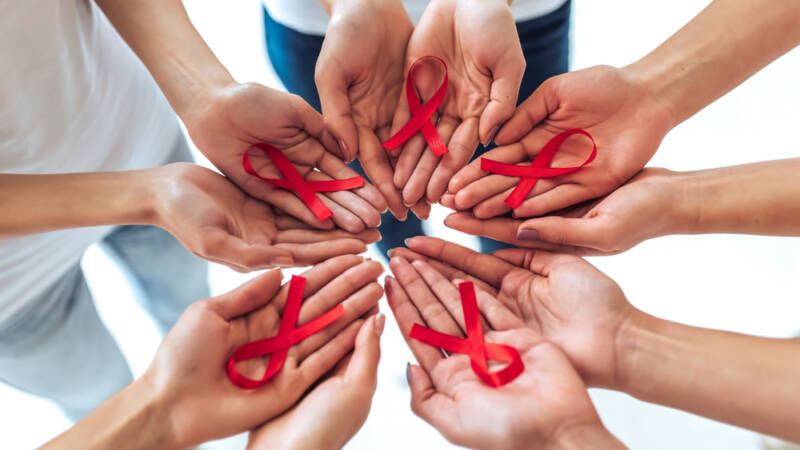Do You Know These Early Signs of HIV?

HIV (Human Immunodeficiency Virus) is a virus that breaks down the defensive cells of a person’s immune system. Approximately 1.2 million Americans are living with HIV and an estimated one in every seven carriers don’t know they have the infection. If left untreated, HIV develops into an incurable and fatal disease called Acquired Immune Deficiency Syndrome (AIDS).
The virus is transmitted via a person’s bodily fluids including semen, vaginal fluids, anal mucus, breast milk, and blood. A person can become infected with HIV as a result of:
- Having sexual intercourse
- Sharing a needle with an infected person (tattoos, piercings, drug use)
- Having infected body fluids enter through an open wound
Early Signs and Symptoms
HIV symptoms don’t appear until two to six weeks after infection, which is why many people don’t realize they’ve been infected. At this point the body tries to fight the virus, often resulting in flu-like symptoms that last about two weeks. These include:
- Fever
- Headaches
- Swelling in the lymph nodes
- Chills and night sweats
- Fatigue
- Muscle aches
- Sore throat
- Red rash on the torso
These symptoms tend to disappear quickly, which can cause people to think that they’re healthy again. Unfortunately this is not the case; the virus is just progressing.
Testing
All the symptoms associated with HIV and AIDS can be caused by other illnesses so testing is the only way to know for certain whether you’ve been infected. The CDC now recommend that everybody between the ages of 18 and 64 get tested at least once during their lifetime and that pregnant women are tested once during every pregnancy.
People who fall into high-risk categories should be tested more frequently. This includes:
- Gay or bisexual men
- Sex workers
- Intravenous drug users
- Any person diagnosed with or treated for tuberculosis or hepatitis
HIV blood tests are straightforward and simply involve testing a sample for antibodies. Speak with your family doctor if you believe you should be tested.
The Progression of HIV
There are three stages of the virus: acute, chronic, and AIDS. The first few weeks after infection is known as the acute infection stage. During this time, many people experience flu-like symptoms, though a smaller subset doesn’t experience any noticeable signs. The similarities between the early days of HIV and the flu make an early diagnosis difficult, as most people – including some doctors – mistake the infection for a harmless cold or flu.
Within a few months, symptoms disappear as the person enters the second (chronic) stage, called clinical latency. This stage lasts, on average, ten years and often doesn’t come with noticeable symptoms. The third and final stage – AIDS – then begins, at which point a person experiences the following symptoms:
- Unexplained weight loss
- Persistent fever
- Constant fatigue
- Persistent swelling of the lymph nodes in the neck, groin, and armpit
- Persistent diarrhea
- Purple, brown, pink, or red patches on the skin
- Sores on the genitals or in the mouth
- Neurological disorders, depression, and memory loss
An HIV carrier is considered to have developed AIDS when their immune CD4 cell count drops below 200 cells per cubic millimeter of blood. At this point, the immune system begins to lose its ability to fight off infection until previously harmless bacteria and viruses become so serious, they’re fatal.
Treatment
There is no known cure for HIV. However, treatment can slow the progression of the virus, keep the immune system strong, and reduce the risk of transmitting HIV to others. This delays the onset of AIDS and extends the infected person’s life expectancy. Treatment should be started as soon as possible after infection occurs.
Antiretroviral therapy (ART) drugs are always used in treatment. This involves a “cocktail” of daily medications that stop the virus from reproducing. When effective, a patient’s viral load is undetectable, even though they still technically have the virus.
There are quite a number of antiretroviral medications, which fall into six groups:
- Entry inhibitors
- Fusion inhibitors
- Nucleoside reverse transcriptase inhibitors (NRTIs)
- Non-nucleoside reverse transcriptase inhibitors (NNRTIs)
- Protease inhibitors
- Integrase strand transfer inhibitors
What combination of medications a person is prescribed will depend on their physician, though it’s common to start with a regimen of three HIV medications from at least two of the above categories.
Some people also use alternative medicine and physical therapy in combination with ARTs. This may include homeopathic medication, yoga, meditation, acupuncture, and massage.
If you’re concerned or have never received an HIV test before, speak to your doctor. Early intervention can significantly delay the onset of AIDS and ARTs are more effective the earlier treatment begins.